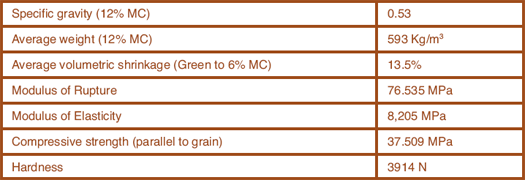Hackberry


Botanical name: Celtis occidentalis
Common/commercial names: Common hackberry
Distribution & Availability
Throughout Eastern USA, although not available in large commercial volumes. There is some export of lumber, mainly in thinner stock and availability of higher grades may be limited.
General Description
Hackberry is closely related to sugarberry (Celtis laevigata) and is a member of the elm family. There is little difference between sapwood and heartwood, which is yellowish grey to light brown with yellow streaks. The wood has irregular grain, occasionally straight and sometimes interlocked, with a fine uniform texture.
Physical & Mechanical Properties

Hackberry is moderately hard, heavy and has medium bending strength, high shock resistance but is low in stiffness. It has a good steam bending classification
Working Properties
The wood planes and turns well and is intermediate in its ability to hold nails and screws, and stains and polishes satisfactorily. Hackberry dries readily with minimal degrade. It has a fairly high shrinkage and may be susceptible to movement in performance.
Durability
Non-resistant to heartwood decay. The heartwood is moderately resistant to preservative treatment, but the sapwood is permeable.
Main Uses
Furniture and kitchen cabinets, joinery, doors and mouldings.
Other Information
Sometimes referred to as sugarberry and used as an ash substitute. Can be susceptible to blue stain before and after kilning, so lumber purchased in USA will tend to be surfaced (planed).
